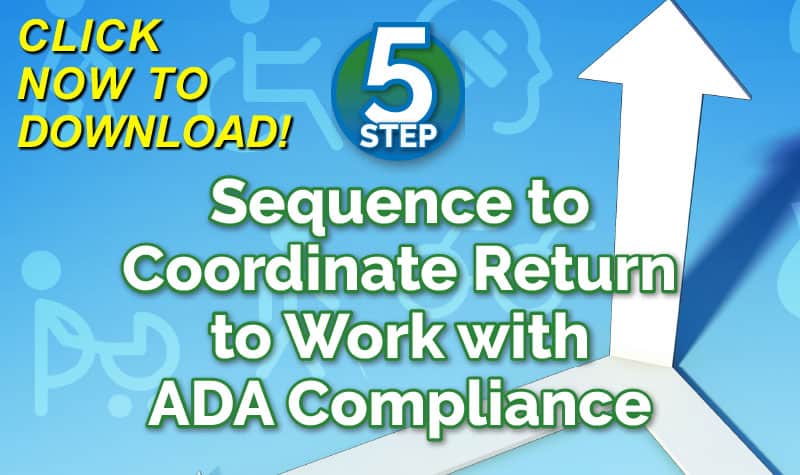Workers’ compensation cost control information is readily available for large companies; but what about the small company?
If you own a small business where you are president, risk manager, occasional clerk and occasional janitor all rolled into one, you may not have the financial resources to have an insurance manager or safety supervisor.
Here are some recommendations on how you can control your workers' compensation cost without spending a lot of additional money.
1- Avoid Injury Claims
As the owner of a small business you are most likely the one who trains new employees on what to do in their jobs. Make sure the new employee understands how to perform the job in a safe manner. As you train the new hire emphasis all the things the employee can do to avoid on-the-job injury. Explain to the employee proper lifting techniques, proper use of machinery, and proper use of safety gear. Make sure the employee understands the safety requirements by taking time to observe the new employee in the performance of his/her job duties. Immediately correct any activity by the employee you know is different from the safest way of doing the job.
Safety does not stop when you have the new employee trained in job performance. It is crucial to continue to promote safe work habits to prevent employees from being injured. Any time any employee, new or old, is observed acting in any manner that is not in compliance with your safety program, take the time to re-train the employee on safe job performance. To keep a safe work environment the on-going promotion of safety is necessary.
2- Drug-free Workplace
By some estimates, up to fifty percent of workers’ comp claims occur because the employee is under the residual effects of illicit drugs or alcohol. By eliminating the effects of drug and/or alcohol abuse the employee is more alert and less likely to commit an act or activity prone to causing an injury.
Injuries Happen – Unfortunately!
Despite your best efforts to prevent injuries they do happen. What you do when an injury occurs has a major impact on your future work comp premiums. Make sure all employees know they must report any work related injury as soon as it happens, even on weekends or night shifts. Complete a First Report of Injury state form (obtain a few copies from your insurance broker before any accidents occur) with as many details as you can gather. If you run out of space, attach additional pages.
The more information you provide to the insurance adjuster and to the state board of workers' compensation, the better. Take pictures of the accident scene. If any of your employees witnessed the accident have them write down a detail description of what they saw and what happened.
Drug Test
As a part of your drug-free workplace policy, administer a required drug, usually done at the time of the employee's initial medical treatment. If the employee wants to delay initial medical treatment, insist the drug test be obtained the same day as the accident. In most states the workers’ comp claim can be either denied or the benefits reduced if the employee is under the influence of illicit drugs or alcohol.
3- Initial Medical Treatment
In the states allowing the employer to select the medical provider for the employees' injuries, exercise your choice and do so. Prior to any injury claims, contact your insurance broker and obtain a list your insurance company's preferred work comp medical providers. Post this list in the break room, and/or by the time clock and other places readily available to all employees. Be sure your injured employee is aware of the medical facility to obtain the initial medical care.
4- Prompt Reporting
As soon as you have arranged for the employee's medical treatment and drug test, you should immediately report the work comp claim to the claims office. Provide to the claims office the First Report of Injury form, the pictures of the accident scene, the written statements of the co-workers who witnessed the accident and any other information you have. The more information you can provide to the work comp adjuster, the better job the adjuster can do in managing the claim.
5- Return-to-Work Program
After an effective safety program, the next best thing a small employer can do to control work comp cost is to have a Return-to-Work Program. A quick way to increase your work comp premiums is to refuse to allow light duty work. The money the insurance company pays the employee in temporary total disability benefits is calculated into your work comp premiums for the next three or four years.
If the employee is not released by the treating physician following the initial medical treatment, contact the employee, the adjuster and the medical provider. Let all three of them know you want and need the employee back at work. Advise each that you are willing to work with any work restrictions the medical provider may impose.
Plan ahead for the modified duty for the employee. Arrange for assistance in lifting heavy loads, provide a chair to accommodate standing restrictions, etc. When the employee does return to work on modified duty be sure to comply with the medical provider's restrictions. You do not want to cause the employee to re-injure themselves and be off work even longer than they would have been otherwise.
6- Other Ways to Influence your Work Comp Cost
Once you have reported the claim to the claims office, don't stop there. Keep in touch with the adjuster. Know what the adjuster is doing on the work comp claim.
Keep in touch with the employee and know what the employee's medical condition is. Know when the employee is going to be back at work. Let the employee know you value his/her contribution to your company and that you need them back at work.
Do not try to be the only safety officer within your company. Build a culture where safety is everyone's responsibility. Let the employees know the more money spent on workers' compensation insurance premiums is less money available for raises and other job benefits. (workersxzcompxzkit)
Plan Ahead
If you wait until you have a workers' compensation claim made by an employee to address controlling your work comp cost, you have waited too long. Take the recommendations made here and create a formal business plan on managing and controlling your work comp cost. Use these guidelines to prevent the injuries from occurring and to mitigate their cost when they do occur.
Author Robert Elliott, executive vice president, Amaxx Risks Solutions, Inc. has worked successfully for 20 years with many industries to reduce Workers' Compensation costs, including airlines, health care, manufacturing, printing/publishing, pharmaceuticals, retail, hospitality and manufacturing. He can be contacted at: Robert_Elliott@ReduceYourWorkersComp.com or 860-553-6604.
Podcast/Webcast: Claim Handling Strategies
Click Here:
http://www.workerscompkit.com/gallagher/podcast/ Claim_Handling_Strategies/index.php
Do not use this information without independent verification. All state laws vary. You should consult with your insurance broker or agent about workers' comp issues.
©2010 Amaxx Risk Solutions, Inc. All rights reserved under International Copyright Law. If you would like permission to reprint this material, contact Info@ ReduceYourWorkersComp.com.



















